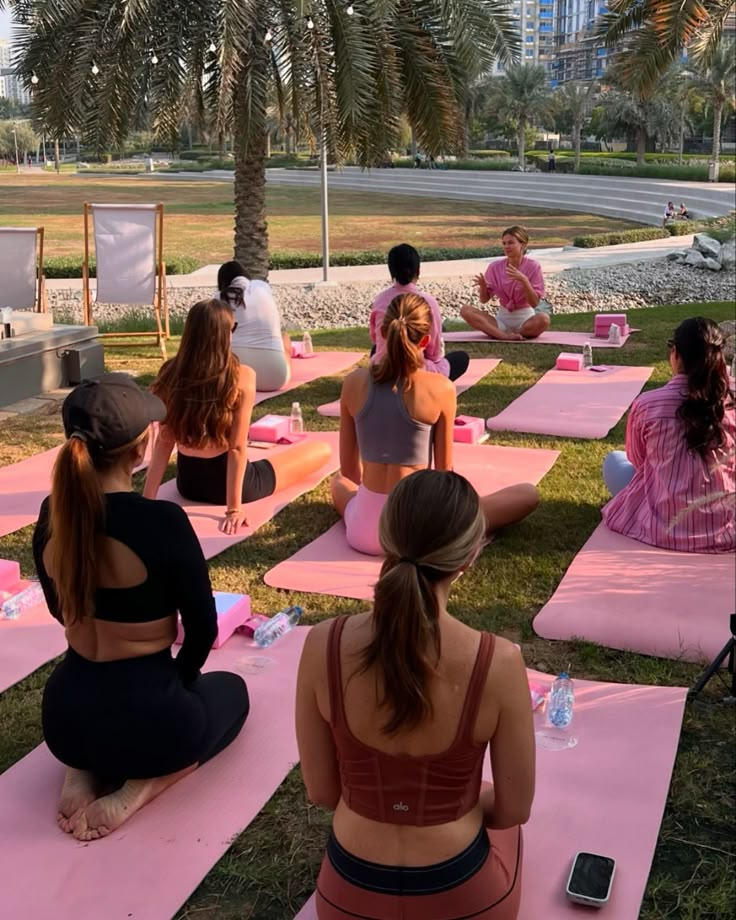In our fast-paced world, finding balance between work, rest, relationships, and personal time often feels like an impossible juggling act. Many of us struggle to set boundaries, leading to burnout and strained connections with the people who matter most. Creating a healthy work-life balance isn’t just a luxury—it’s essential for your overall wellbeing, productivity, and the quality of your relationships.
The good news is that achieving this balance doesn’t require drastic life changes. Simple techniques like time blocking, setting clear boundaries, and implementing focused work periods followed by intentional breaks can transform your daily experience. By prioritizing rest alongside productivity, you give yourself permission to recharge while actually improving your effectiveness during work hours.



Key Takeaways
- Setting clear boundaries between work and personal life enhances both your productivity and overall wellbeing.
- Implementing specific time management techniques like the Pomodoro method can help you stay focused while preventing burnout.
- Scheduling dedicated time for relationships, self-care, and rest is just as important as meeting your professional obligations.
Understanding Balance: Work, Rest, Relationships, and Personal Time
Finding equilibrium between different aspects of life is essential for overall wellbeing and happiness. Balance isn’t about perfect equality but rather creating a sustainable rhythm that works for your unique circumstances and priorities.
Defining a Balanced Life
Balance means different things to different people. For you, it might be having enough energy for both work and personal commitments without feeling constantly overwhelmed. A balanced life includes meaningful work, quality relationships, adequate rest, and time for yourself.
Work provides purpose and financial stability, while relationships give emotional support and connection. Rest allows your body and mind to recover, and personal time lets you pursue interests that bring joy.
The concept isn’t about dividing hours equally across all areas. Instead, it’s about ensuring each part of your life receives appropriate attention based on your values and current life stage.
Think of balance as a dynamic process that changes with different seasons of life, not a fixed destination.
The Importance of Addressing All Life Areas
Neglecting any area of your life can create ripple effects across the others. When you consistently work long hours, your relationships often suffer, and your health may decline from insufficient rest.
Research shows excessive work hours negatively impact personal relationships and overall happiness. Conversely, nurturing relationships provides emotional support that helps you manage work stress better.
Rest isn’t laziness—it’s essential maintenance. Your brain needs downtime to process information and recover. Without it, your productivity and creativity at work actually decrease.
Personal time allows you to reconnect with yourself and pursue activities that bring fulfillment. This self-care helps prevent burnout and keeps you energized for other responsibilities.
When you address all areas, they actually complement each other rather than compete for your attention.
Common Misconceptions About Balance
The biggest misconception is that balance means a perfect 50/50 split between work and personal life. In reality, some days might require more focus on work, while others allow more personal time.
Balance doesn’t necessarily mean doing everything. Sometimes it requires saying no to certain commitments to protect your energy for what truly matters.
Many people believe they’ll find balance “someday” when work slows down. This thinking trap keeps you postponing your wellbeing indefinitely.
The “hustle culture” promotes overworking as the path to success, but sustainable achievement requires periods of rest and rejuvenation. The most successful professionals understand this principle.
Balance isn’t selfish—it’s necessary. Taking time for yourself makes you more present and effective in your relationships and work responsibilities.
Remember that balance looks different for everyone. Your ideal balance depends on your unique circumstances, values, and life stage.



Strategies for Achieving Work-Life Harmony
Finding harmony between work and personal life requires intentional effort and practical strategies. Establishing clear boundaries, managing your time effectively, and embracing flexibility can transform your daily experience from stressful to sustainable.
Setting Effective Boundaries
Creating clear boundaries between work and personal life is essential for maintaining balance. Start by defining specific work hours and communicating them to colleagues, clients, and family members. This helps set expectations about your availability.
Consider designating a dedicated workspace if you work from home. This physical boundary helps your brain switch between professional and personal modes more effectively.
Be firm about not checking work emails or messages during your personal time. You might need to disable notifications after hours to avoid the temptation of responding.
Learn to say “no” to additional responsibilities when your plate is already full. Protecting yourself from overload isn’t selfish – it’s necessary for sustainable performance and wellbeing.
Time Management Techniques
Effective time management is the backbone of work-life harmony. Try the Pomodoro Technique – work intensely for 25 minutes, then take a 5-minute break. This helps maintain focus while preventing burnout.
Create a daily schedule that includes both work tasks and personal activities. Block time for important but non-urgent activities like exercise, family meals, or hobbies.
Prioritize tasks based on importance rather than urgency. Use a simple matrix to categorize tasks:
- Important and urgent: Do immediately
- Important but not urgent: Schedule time for these
- Urgent but not important: Delegate if possible
- Neither urgent nor important: Eliminate
Batch similar tasks together to minimize context switching and improve efficiency.
Flexibility in Work and Personal Life
Embrace flexible work arrangements when available. Remote work options or flexible schedules can dramatically improve your ability to balance professional responsibilities with personal needs.
Communicate openly with your manager about your work preferences and constraints. Many employers now recognize that supporting work-life balance improves retention and productivity.
Be adaptable with your routine when unexpected situations arise. Having contingency plans for childcare, transportation issues, or health concerns reduces stress when things don’t go as planned.
Remember that flexibility works both ways – sometimes you might need to adjust personal plans for important work deadlines, while other times work may need to accommodate personal priorities.



Nourishing Well-Being: Rest, Sleep, and Recreation
Taking time to replenish your energy is essential for maintaining balance in today’s busy world. When you prioritize rest and recreation, you create space for better physical health, improved mental clarity, and deeper enjoyment of life.
The Power of Rest and Quality Sleep
Sleep is your body’s natural restoration process. When you consistently get 7-9 hours of quality sleep, you support your immune system, enhance cognitive function, and regulate emotions more effectively.
Creating a relaxing bedtime routine signals to your body that it’s time to wind down. Try dimming lights, avoiding screens 30 minutes before bed, and keeping your bedroom cool and comfortable.
Sleep debt accumulates when you regularly get insufficient rest. Even missing one hour of sleep affects your performance and mood the next day.
If you struggle with falling asleep, consider:
- Maintaining a consistent sleep schedule (even on weekends)
- Limiting caffeine after noon
- Using your bed only for sleep (not work)
Incorporating Breaks and Downtime
Short breaks throughout your day prevent burnout and actually improve productivity. The Pomodoro Technique—working for 25 minutes followed by a 5-minute break—can help maintain focus while giving your mind regular rest.
Your brain needs downtime to process information and develop new insights. That’s why solutions often appear when you step away from a problem.
Try scheduling “white space” in your calendar—unstructured time that allows your mind to wander and recharge. Even 10-15 minutes can make a difference.
Physical microbreaks matter too. Stand up, stretch, or take a short walk every hour to reduce physical tension and eye strain from screens.
Fun, Play, and Hobbies
Play isn’t just for children—it’s a fundamental human need that reduces stress and sparks creativity. When was the last time you did something purely for enjoyment?
Hobbies provide a healthy escape from work pressures while developing new skills and connections. Consider activities like:
- Creative pursuits (drawing, writing, music)
- Physical activities (hiking, dancing, sports)
- Social games (board games, card nights)
- Learning new skills (cooking classes, languages)
The key is finding activities that absorb your attention completely, creating a state of “flow” where time seems to disappear. These experiences are deeply restorative.
Make weekly appointments with yourself for recreational activities, treating them as important as any work meeting.
Relaxation Techniques and Unplugging
Digital devices keep us constantly connected but often mentally scattered. Setting boundaries around screen time allows your nervous system to truly relax.
Effective relaxation techniques include:
- Deep breathing: Try the 4-7-8 method (inhale for 4, hold for 7, exhale for 8)
- Progressive muscle relaxation: Tensing and releasing muscle groups
- Meditation: Even 5 minutes daily builds resilience
- Nature immersion: Spending time outdoors reduces stress hormones
Consider creating tech-free zones in your home or designated hours when devices are put away. The constant alerts and information flow tax your attention and keep your brain in an activated state.
Spending time in natural settings—parks, beaches, forests—provides a particularly potent form of restoration that can’t be replicated indoors.



Prioritizing Relationships and Social Connections
Meaningful connections with others form the cornerstone of a balanced life, providing emotional support and a sense of belonging that work achievements alone cannot fulfill.
Family Time and Quality Interactions
Creating intentional family time helps strengthen your most fundamental relationships. Try scheduling regular family activities like game nights, shared meals, or weekend outings that everyone can look forward to.
Digital distractions often undermine quality time. Consider implementing “device-free zones” during family gatherings to ensure genuine connection.
Even brief, meaningful interactions matter. A 15-minute focused conversation with your child or partner can be more valuable than hours of distracted togetherness.
Express gratitude to family members regularly. Simple acknowledgments of their contributions or qualities can deepen bonds and create a positive home atmosphere.
Nurturing Friendships and Support Networks
Friendships require active maintenance, especially amid busy work schedules. Try “time-boxing” – setting aside specific blocks in your calendar dedicated to connecting with friends.
Quality trumps quantity in social relationships. Having a few deep, supportive friendships often provides more fulfillment than numerous casual acquaintances.
Shared interests create natural opportunities for connection. Join clubs, classes, or volunteer activities aligned with your personal interests to meet like-minded people.
Be present when spending time with friends. Active listening and showing genuine interest in their lives strengthens bonds more than dividing your attention.
Healthy Communication and Shared Activities
Clear communication forms the foundation of strong relationships. Practice expressing your needs and boundaries while remaining open to others’ perspectives.
Shared activities create bonding opportunities and new memories. Try exploring new hobbies together – cooking classes, hiking trails, or creative projects can bring fresh energy to relationships.
Balance speaking and listening in your interactions. Aim for roughly equal conversation time and practice truly hearing what others say before formulating your response.
Recognize that different relationships require different communication styles. Your approach with colleagues might differ from family members, but authenticity matters in all contexts.
Finding activities that accommodate various interests helps include everyone. Look for flexible options where participants can engage at different comfort levels.
Fostering Personal Growth and Self-Care
Personal growth and self-care form the foundation of a well-balanced life. When you prioritize these elements, you create space for joy, fulfillment, and increased self-worth while building resilience against life’s challenges.
Understanding Your Needs and Priorities
Self-awareness is the first step toward effective self-care. Take time to reflect on what truly matters to you. What activities energize you? What relationships nurture your spirit?
Consider creating a personal values inventory by listing what’s most important in your life. This might include family, career advancement, creative expression, or physical health.
Your priorities will likely shift throughout different life stages, and that’s perfectly normal. Regular check-ins with yourself help ensure your daily actions align with your core values.
Be honest about your limitations. Setting boundaries isn’t selfish—it’s necessary for maintaining your well-being and showing up fully in all areas of life.
Daily Routines for Self-Care
Incorporate small self-care practices into your everyday life rather than viewing them as occasional indulgences. Morning routines can set a positive tone—try meditation, journaling, or gentle stretching before diving into work.
Physical self-care forms the basis of overall wellness. Aim for adequate sleep (7-9 hours for most adults), nutritious meals, and regular movement that brings you joy.
Quick Self-Care Ideas:
- Take a 10-minute walk outdoors
- Practice deep breathing between meetings
- Enjoy a cup of tea without distractions
- Connect with a supportive friend
Remember that self-care isn’t always relaxing baths and massages. Sometimes it means making difficult choices like saying no to commitments that drain your energy.
Incorporating Joy and Fulfillment
Joy often comes from pursuing activities purely for their own sake, not for productivity or achievement. What made you happy as a child? These activities often point toward genuine sources of joy.
Create a “joy list” of simple pleasures that brighten your day. Include both solo activities and ways to connect meaningfully with others.
Personal growth happens when you step outside your comfort zone in manageable ways. Try learning a new skill, taking a different route to work, or having a conversation with someone whose perspective differs from yours.
Balance growth-oriented challenges with activities that feel effortless and energizing. This combination nurtures both your development and your happiness.
Overcoming Challenges to Maintaining Balance
Maintaining balance isn’t always easy in our fast-paced world. You’ll face obstacles that threaten your equilibrium, but with the right strategies, you can overcome them and create a more harmonious life.
Identifying Signs of Burnout and Fatigue
Are you constantly feeling exhausted no matter how much you rest? This might be a sign of burnout rather than simple tiredness. Pay attention to your energy levels throughout the day and notice if you’re experiencing unexplained headaches or body aches.
Mental fatigue often manifests as difficulty concentrating, forgetfulness, or making simple mistakes. Your emotional well-being might suffer too, with increased irritability or feeling detached from things you once enjoyed.
Physical symptoms like disrupted sleep patterns, changes in appetite, or frequent illness can signal your body is struggling with prolonged stress. Don’t ignore these warning signs – they’re your body’s way of communicating that something needs to change.
Listen to feedback from friends or family who notice changes in your behavior. Sometimes others can spot signs of burnout before we recognize them ourselves.
Managing Stress and Workplace Pressures
Set clear boundaries between work and personal time. This might mean turning off email notifications after hours or designating specific work-free zones in your home.
Take regular breaks throughout your workday to refresh your mind and prevent mental fatigue. Even a five-minute walk or stretch can help reset your focus and reduce stress levels.
Practice stress-reduction techniques that work for you. This could be deep breathing, meditation, or simply stepping outside for fresh air when you feel tension building.
Communicate openly with supervisors about workload concerns. Many workplace pressures can be addressed through honest conversations about expectations and capacity.
Physical activity is one of the most effective stress relievers. Even modest exercise releases endorphins that improve your mood and overall well-being.
Learn to delegate tasks when possible and say no to additional responsibilities that would overload your schedule. Protecting your time is essential for maintaining balance.
Restoring Balance and Preventing Dissatisfaction
Reconnect with activities that bring you joy but might have been neglected. Whether it’s reading, cooking, or spending time in nature, make these activities non-negotiable parts of your schedule.
Prioritize your physical health through regular exercise, balanced nutrition, and sufficient sleep. Your body needs this foundation to handle life’s demands effectively.
Create a self-care routine that addresses your mental well-being. This might include journaling, therapy sessions, or simply dedicated quiet time for reflection.
Be flexible with your expectations of “perfect” balance. Some days will lean more toward work, while others might focus on relationships or personal time. Aim for balance over time rather than each individual day.
Review and adjust your priorities regularly. As circumstances change, your approach to maintaining balance should evolve too.
Build a support network of friends, family, or colleagues who understand your goals for better balance. They can provide accountability and encouragement when challenges arise.






